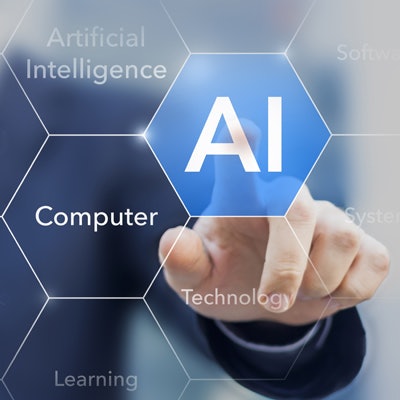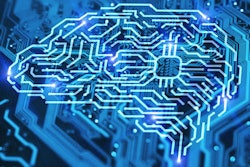
An artificial intelligence (AI) algorithm was able to automate and significantly speed up the simple but labor-intensive task of manually measuring leg length discrepancy on pediatric radiographs, according to research published online April 21 in Radiology.
A team of researchers led by first author Qiang Zheng, PhD, of Yantai University in China, and senior author Dr. Raymond Sze of the Children's Hospital of Philadelphia found that measurements made by their deep-learning algorithm of leg length on radiographs correlated very highly with those made by pediatric radiologists. The algorithm was also nearly 100 times faster.
"This will help make more efficient use of radiologists' time and expertise," the authors wrote.
To train and test their algorithm, the researchers gathered full-length radiography studies acquired on a digital radiography system (EOS Imaging) in 179 pediatric patients. Of the 179 patient studies, 70 were used for training and 32 were utilized for validation. The final 77 patients served as the test set.
On the test set, the researchers found high correlation (p < 0.001) between the deep-learning model's calculations and the manual measurements recorded in the radiology reports:
- Correlation for lengths of separated femurs and tibias: r = 0.99, mean absolute error, 0.45 cm
- Correlation for full pediatric leg lengths: r = 0.99, mean absolute error, 0.45 cm
- Correlation for full leg length discrepancy: r = 0.92, mean absolute error, 0.51 cm
In a speed comparison on a random sample of 26 cases, the algorithm produced leg length discrepancy results in an average of one second, compared with an average of 96 seconds for a pediatric radiologist with 20 years of experience.
The authors noted that further prospective studies should be performed to increase the diversity of images with skeletal dysplasia or hardware, to measure leg angles, or to incorporate segmental views of the hips, knees, and ankle.
"The developed algorithm has potential in the measurement of leg angles and the evaluation of patients with hardware, and the next phase of algorithm development will encompass more complex presentations," they wrote.
In an accompanying editorial, Dr. Rick van Rijn, PhD, of the University of Amsterdam and Alberto De Luca, PhD, of the University Medical Center Utrecht in the Netherlands said that the research demonstrates how deep learning can alleviate radiologist workload by handling repetitive, time-consuming tasks.
It also reveals three reasons why radiologists should embrace AI, according to van Rijn and De Luca. First, it can enable radiologists to dedicate themselves to other high-level tasks and speed up their workflow. In addition, deep learning can perhaps learn from expert consensus once, then reapply this refined process in the future. What's more, AI can enable the democratization of knowledge and healthcare, they said.
Although existing algorithms have a number of limitations to be aware of, the study by Zheng et al also shows "that deep learning can play a role in pediatric radiology, a subspecialty where, given the relatively low number of cases, adoption of deep learning is limited," the authors wrote.



















